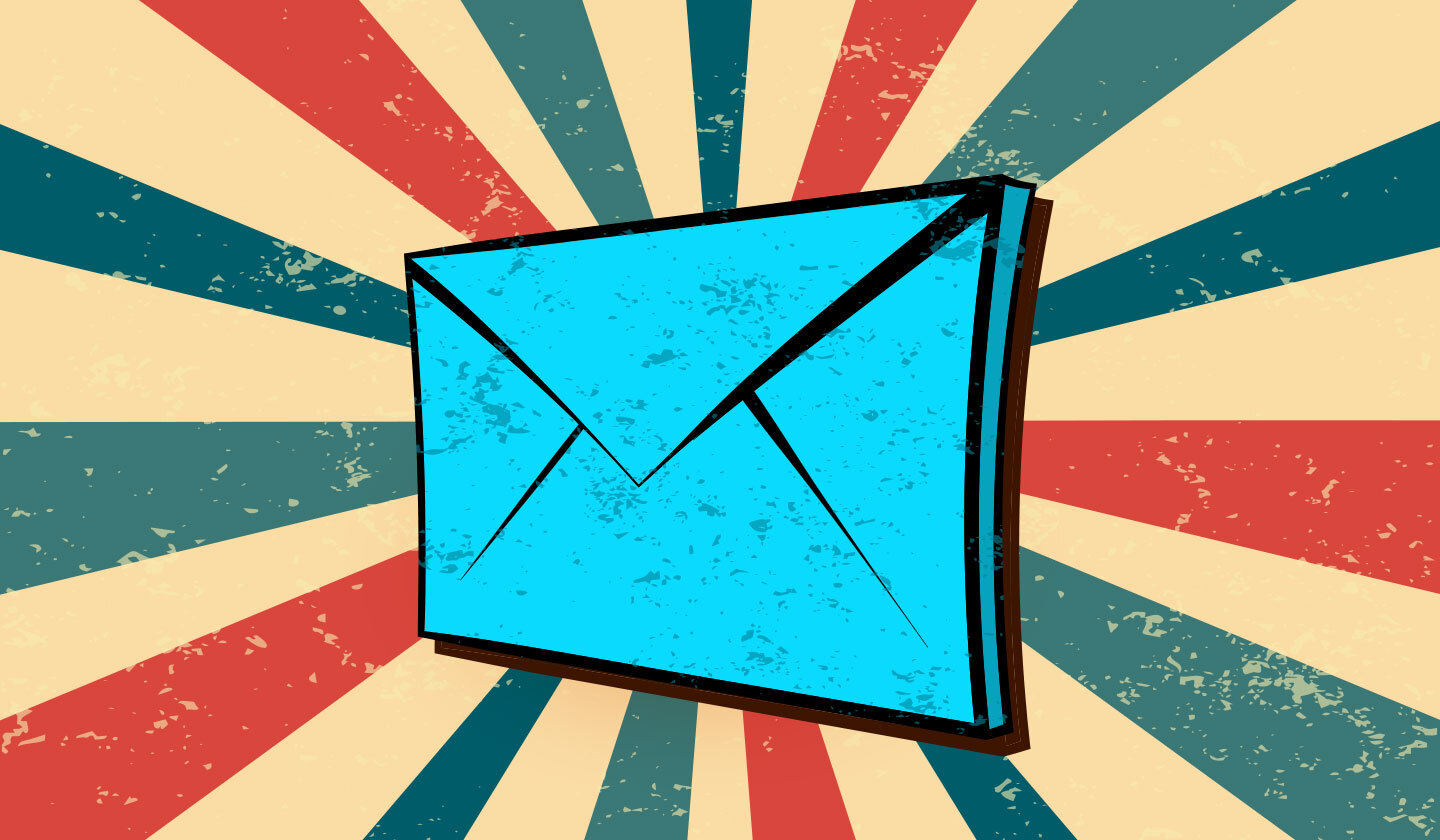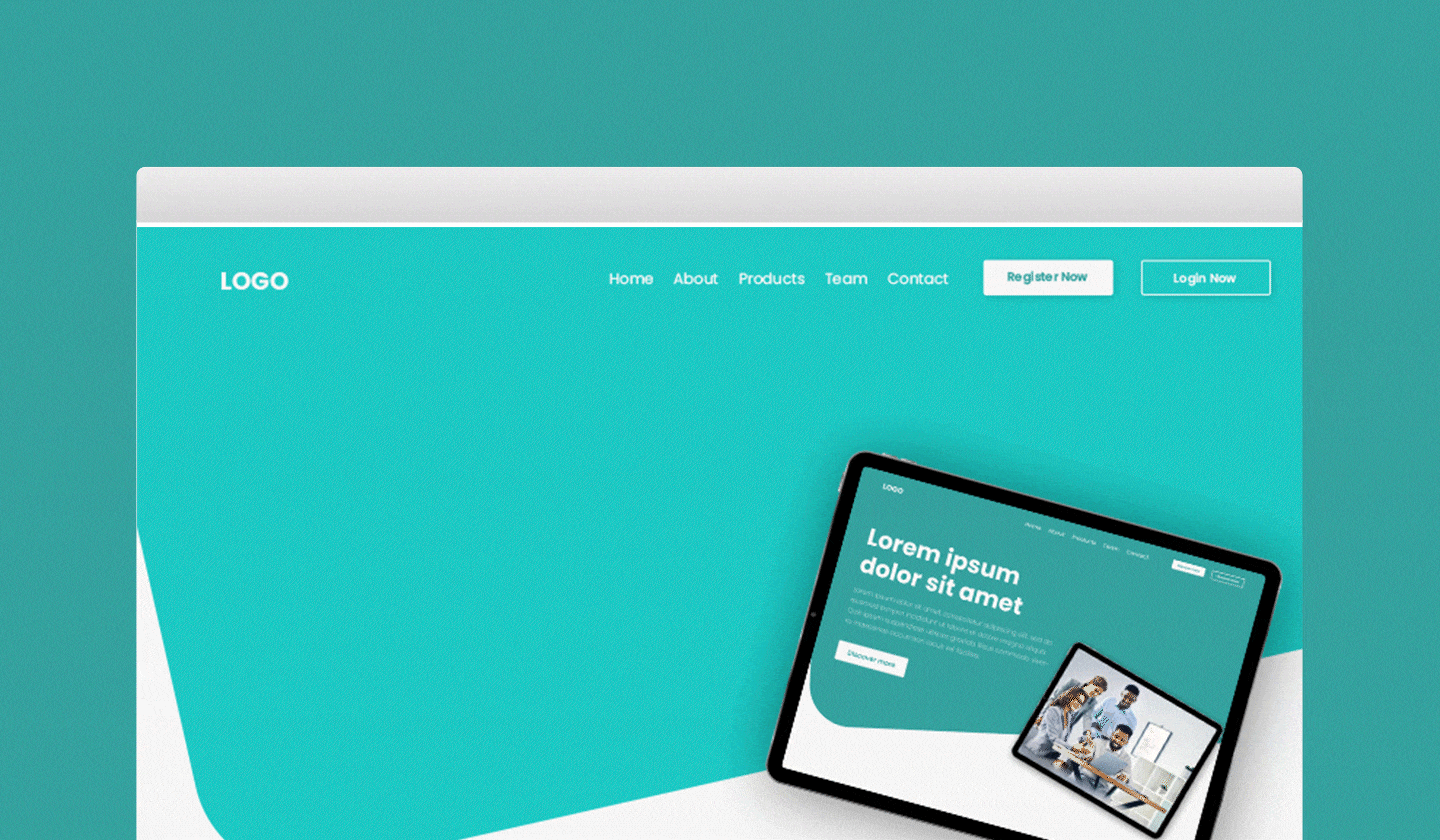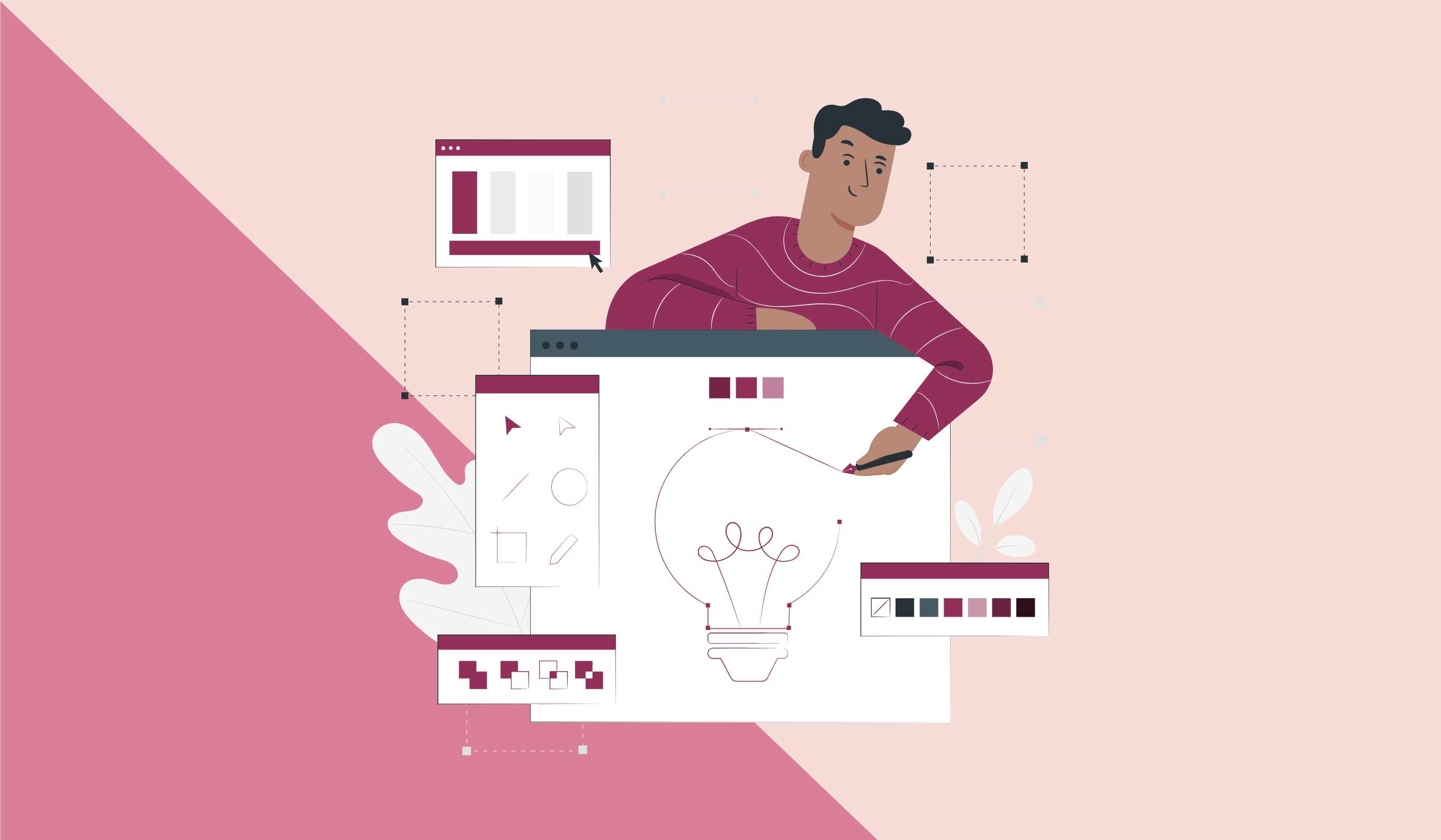3 Simple Email Template Designs That Get Results
Email templates don’t have to be fancy to retain attention or generate engagement. Sometimes, you can see a better return on your marketing efforts by applying the “less is more” rule than if you distract recipients with cluttered emails.
Often, a simple email template that keeps a balance between text and pictures is more effective than a never-ending message, full of images and links. Moreover, according to Campaign Monitor, clean design can keep spam filters away and influence your overall emails’ deliverability.
In other words, if you’re planning to test some new email templates to impress your target audience, you might want to start easy. Many marketers have excellent results with a simple email template, proof that simplicity pays off in email marketing.
To give you a better understanding of what simple means in email marketing, we’ve put together guidelines and some email template designs used by fellow marketers.
Text-only email templates
As a marketer, you may be familiar with the images vs. no-images email marketing debate. In short, some people believe that images in emails make the message look too salesy, so they suggest a zero-image policy. On the other hand, other marketers say that visual content makes emails more engaging and visually pleasing.
So, how do you know what email templates to choose? You don’t until you test several designs. The fact is there is no crystal ball that shows how your emails will perform, and no marketing guru can tell you what gets results without having insight into your audience.
You shouldn’t choose email templates based on suggestions from people who don’t know your recipients and their preferences. What you can do is think of what your public likes to read and test simple email templates that could meet their expectations.
For example, Lee Munroe, designer and founder of HTML Email, prefers a text-only proprietary template because it resonates with his company. Munroe explained: “My audience is typically developers or more technical than most, and I think this persona is more likely to automatically associate lots of images with spam. The simpler, plain text looking email may look like it's coming from a person, rather than a company or marketing department, and the recipient is, therefore, more likely to engage.”
When to use
Lee Munroe hasn’t decided to quit images without testing his ideas first. His team did A/B testing to know what worked with their audience. They ran a test on 10,000 subscribers with their monthly newsletter, in which half of the recipients received an email (version A) that had accompanying images for each article listed. The other half received a text-only email (version B), and the results were pretty suggestive. “Both emails had a 26% open rate. Version A had a 4% CTR and Version B had a 6% CTR. The version with no images performed better. Way better. 50% better,” Munroe said.

As you can see from the image above, Version B has the advantage of showing all links at once. People who open the email have a complete visual of what they can read and choose whatever they want without having to scroll through the email. It can be an advantage when your audience doesn’t have time to go through long emails and is likely to lose patience quickly.
Keeping it plain and simple works for the audience of HTML Email, and it could bring good results to you, too, if you target a similar audience. The only way to know for sure is to find the most straightforward template out there and use it.
The challenges of creating compelling copy
In text-only emails, the quality of your text is vital. You want your message to generate engagement and be perfectly tailored to your readers’ expectations, as there’s nothing else there to capture their attention.
Ideally, you should keep things short (around 200 words) and sharp to make sure people remain focused on your message and take action.
Creating structures that can be easily replicated across more email marketing campaigns can be helpful when you want to send maximum information with the minimum number of words. For example, Sapph, from Art of Emails, recommends a 5-point email that has brought good results. Sapph’s email model follows these simple instructions:
Mention something the recipient did recently that is related to your product.
Using your product, pull a few useful data points for your audience.
Briefly explain how your recipients can leverage the data and the benefits of using it.
Explain how you pulled the data points using your product.
Ask your public for a brief chat, framed in terms of you wanting to learn more about how you can help them.

This simple email template is ideal for cold emailing, as it’s clean and convincing at the same time, thanks to the clarity of the message. Sapph went on: “Mentioning product benefits makes prospects think on their own how they can use your product for their business; many won't. This cold email approach gets a much higher reply rate because it shares upfront something valuable for them they can get out of using your product.“
Farzad Rashidi, director of marketing at Visme, confirms the benefits of opting for text-only emails. His company’s welcome email, for example, has a 28.13% open rate.

What makes this email so effective, despite not sharing any images? Here’s what Farzad Rashidi said: “We released that email deliverability is higher with plain text emails and more people click on the CTAs. The email is short, and there is proper spacing in between lines to make it easier to read, we tried to keep the text as short as possible.”
These three companies have similar audiences--tech-savvy people who can appreciate the benefits of a product without visual clues. If you’re targeting different audiences, you want to make sure that people have a full understanding of your message. In such a case, images might help.
Simple custom-made email designs
Custom-made email designs allow you to create visually appealing versions of your emails. In plain English, you can use a template that makes it easy to add a photo or other visual elements next to your text.
The usage of email templates is convenient because you no longer need coding skills to build a structure from scratch. Also, if you choose a responsive template, you don’t have to work with a designer to make sure your email reflects your brand and looks good on all devices.
The downside is that, with so many templates out there, you might feel tempted to choose complicated designs, with fancy graphics that are hard to customize to meet your readers’ expectations.
As a guideline, with ready-to-use templates, simple is always better. Mor Mester, head of marketing at Automizy, had excellent results with only minimalist design and a friendly tone. One of his most successful emails in the company’s last campaign had a single image and “short but sweet” copy.

This email stood out in a complete email sequence, as it had a 48.72% open rate, mostly thanks to its subject line "Meet your webinar host!” But that’s not all Mester got with this message. Even without a CTA, this email still managed to guide recipients and triggered reactions.
Mester shared how his recipients felt about this particular email: “We just wanted people to get familiar with us and remind them about the webinar. It worked great, over 42% of registrants attended the webinar, and a couple of them even mentioned this email in the Q&A section.”
The response to Mester’s email shows how important clean design is in email marketing and how much you can achieve by sending to-the-point messages at the right time.
When to use
Adding an image to your email is useful when you want to transmit not only knowledge but also emotion. Let’s go back to the previous example. Mester’s profile photo was essential in his email, as it allowed recipients to add a face to the webinar’s name, a simple way to build further trust with the audience.
If your email is meant to introduce a new product or increase brand awareness, a visual clue can help people familiarize themselves with your company or products.
The formula image + short copy + CTA seems to be the winning choice for many marketers. Moosend used it to announce brand subscription forms, a feature of the company’s product that customers had been waiting for a long time.

This simple email template proved to be pretty useful. According to Nick Dimitriou, head of growth at Moosend, the email had a 19.4% open rate, with a 2.1% CTR. He explained why this email performed so well. “Simple design means fast loading time on any device, and this, ultimately, leads to more clicks. There are plenty of reasons why this email campaign worked, and one of those is, undoubtedly, the fact that we were talking about a long-awaited feature. But the simple design, the brand colors that were prominent in this email and the simple yet effective copy did more than good in this case.”
Magazine-style email template designs
Magazine-style email templates are hard to keep simple, but when you do it, the results can be impressive. Whether you opt for a custom-made email template or decide to create it from scratch, it’s essential to keep things as simple as possible.
Kathryn Aragon, head of content at Saleshacker, ideated a format for the company’s newsletter that reminds of a mini-magazine. After an intro meant to pique interest, she stacks modules to create an interesting flow of content. Also, she makes sure that all newsletters have regular columns, such as timely news and features.

As you can see, Aragon opted for a text-only format to keep things simple. She explained: “Immediately after moving to an early version of this newsletter format, our readership and engagement jumped significantly. Since then, I've played with the format, tweaking it to see if I can improve it any more. Right now, our readers seem to be enjoying a simple, streamlined version -- probably because it's so easy to scan and find the topics you're most interested in.”
Depending on your public’s preferences, you can try to introduce visual elements to make your content more engaging. An example of a magazine-style email template that uses images comes from Matcha.

At first glance, this specific template can scarcely be labeled as ‘simple’, but the truth is, the design is quite easy to follow. Celia Quillian, marketing strategist at Matcha, explained what made this email template so compelling: “What has worked for us is clear section divisions and familiar placement. We are training our readers to know where to scroll for their favorite e-commerce marketing intel. We always reserve our top section for a quick summary of what's in the newsletter, employ large CTA buttons for the content we most want them to read, and add in relevant gifs for a fun visual appeal.”
When to use
Rich media emails are more suitable for e-commerce, retail, fashion, and the travel industry, which rely on visual content to impact the audience. It’s also more likely to get results in the B2C sector. Again, this isn’t an exact science, and only by testing can you see what generates engagement and what pushes people away.
The secret is always to be aware of the fine line between simple and kitsch when opting for magazine-style email templates. You should make sure that your text: image ratio is close to 80:20 and that the overall design is always aligned to your brand values.
The ultimate goal is to provide a seamless reading experience and add value to your public. Too much clutter will do the opposite, and you’ll start losing subscribers.
Why get started with a simple email template
When you write an email, simplicity is the ultimate sophistication. A clear message and clean design are more likely to keep your audience engaged than a cluttered email that doesn’t follow any patterns.
Let’s recap the benefits of going simple in email marketing:
Simple emails look like they’re coming from a person, not a marketing department, and are more likely to get engagement.
Text-only emails are less likely to be labeled as spam.
Short emails with proper spacing in between lines are easy to scan to find the topics you're most interested in.
Simple email templates have a fast loading time on any device, which can result in more clicks.
Clear section divisions help your recipients to find their favorite topics without effort.
Now it’s your turn to find the email template that best suits your needs and customize it to speak the language of your recipients. Just keep in mind that everything you create should be centered around your audience and their preferences.




